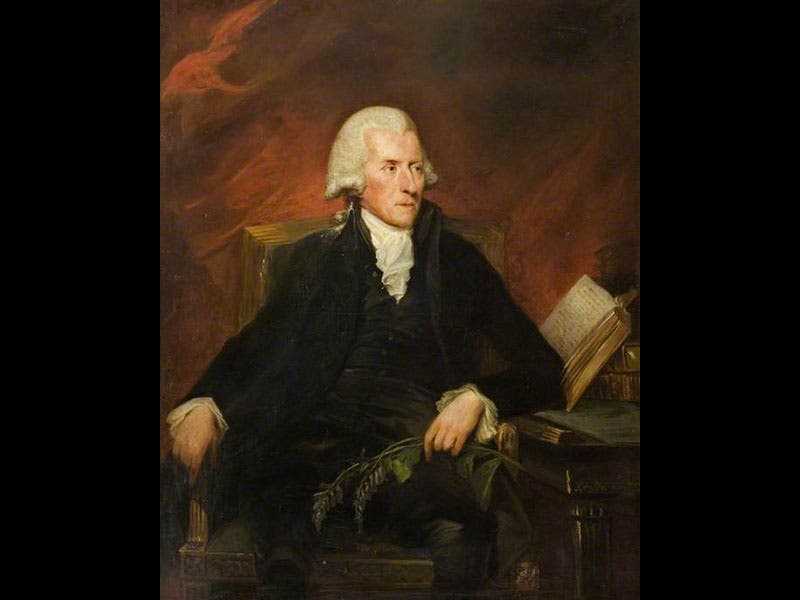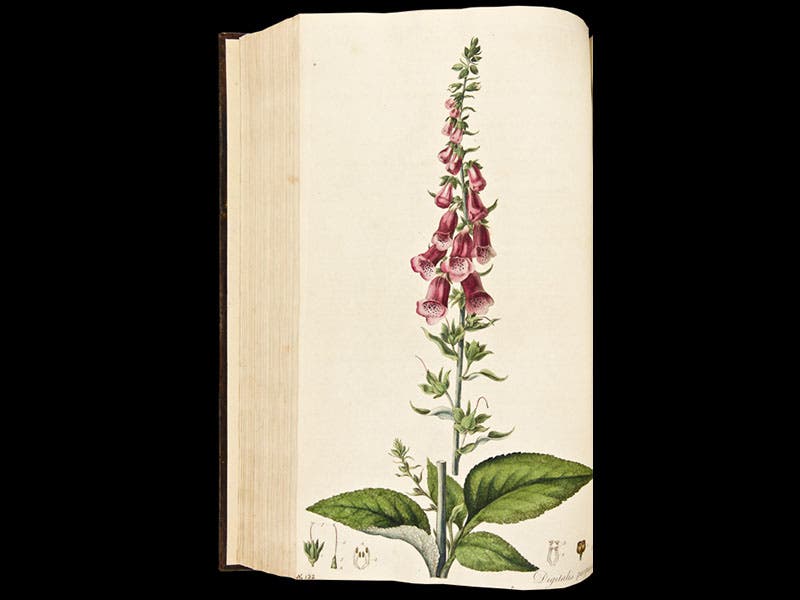Scientist of the Day - William Withering
William Withering, an English physician and botanist, was born Mar. 17, 1741. After receiving his medical degree from Edinburgh in 1766, Withering was invited by Erasmus Darwin to come to Birmingham to fill the void left by the early death of William Small. Withering did so, was invited into the intellectual circle known as the Lunar Society of Birmingham, and spent the rest of his life there.
Soon after moving to Birmingham, Withering grew interested in botany, and in 1776 he published a guide to English plants, The Botanical Arrangement of all the Vegetables Growing in Great Britain, which was organized according to the new Linnaean botanical system. In 1787, he published a second edition, which was much improved, and this is the edition that we have in our History of Science Collection. The work was immensely popular and went through 12 more editions until the last appeared in 1877.
But it is Withering’s 1785 book, An Account of the Foxglove, and Some of its Medical uses, that has won him a spot in the medical Hall of Fame. In 1775, he learned that a folk remedy made by a country woman was said to be very effective against dropsy—the swelling of trunk and extremities that often accompanies incipient heart failure. The woman’s concoction contained 20 different herbs, but only one stood out to Withering: foxglove, Digitalis purpurea. So for the next ten years, he experimented with foxglove--dried, distilled, powdered, prepared from flowers, leaves, or roots--for treating dropsy. He kept a careful record of each case, noting the successes and failures, and the instances where the patient was indifferent to the drug. In his book, he succinctly described each of his 163 cases, as well as dozens of cases reported by correspondents. He concluded that in many instances, digitalis can indeed effect a cure for dropsy. The book has ever since been a medical classic, and digitalis derivatives are still being prescribed for various heart conditions. We do not have An Account of the Foxglove in our Library, nor should we, since it is really a medical book, and outside the scope of our holdings.
In 1792, the Swedish portrait artist Carl Frederik von Breda painted Withering. In the portrait, in the Swedish National Museum, the good doctor sits, holding a foxglove in his hand and staring at page 654 of the second edition of his Botanical Arrangement (the edition we have in our Library), where Digitalis the plant is described, and where he says of digitalis the drug: "It is certainly a very active medicine and merits more attention than modern practice bestows upon it." There is a copy of this painting at the University of Birmingham (second image).
We have several lovely images of the foxglove in our collections, an engraving in Philip Miller's Figures of … Plants, 1760 (first image), and another in William Curtis’s Flora Londonensis, 1777-98, a work that we have not digitized, so the image here is from a book-dealer's offering (third image). The blue plaque (fourth image) is on Withering's former Birmingham home, Edgbaston Hall, now a golf course clubhouse.
Dr. William B. Ashworth, Jr., Consultant for the History of Science, Linda Hall Library and Associate Professor, Department of History, University of Missouri-Kansas City. Comments or corrections are welcome; please direct to ashworthw@umkc.edu.










